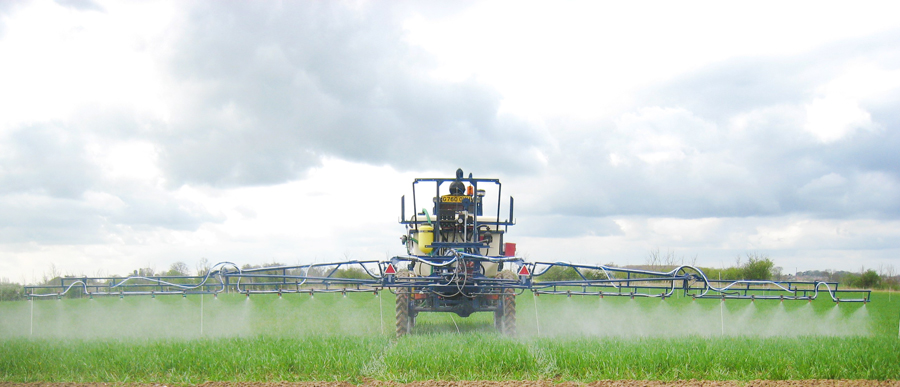Simple spraying guidelines for better disease control
20th April 2021
Running through a simple application checklist ahead of key T1 and T2 disease control programmes can deliver sizeable improvements in product performance and yield.
As well as providing a better return on investment, keeping on top of disease will minimise the need for curative activity, reducing selection for pathogen resistance and helping to maintain the efficacy of today’s limited fungicide armoury.
Agrovista technical manager Mark Hemmant says: “Agrovista has carried out many trials over several years at the important T1 and T2 timings where yellow rust was the main pathogen.
“These trials clearly demonstrate the importance of correct application techniques. By following a few simple guidelines, growers can significantly improve control for very little outlay and effort.”
However, good timing remains key and should be the primary aim, as any slippage can have a big impact on yield.
“Agrovista trials show being a week late at T2 (GS37-39) can cause yield potential to fall away by as much as 0.5-1t/ha, and by much more as the delay increases,” says Mark.
Boom height
Boom height has a major effect on application accuracy. “Apart from bad timing, this is probably the biggest cause of poor fungicide performance,” says Mark. “The optimum boom height is 0.5m above the crop. Doubling it typically increases drift by a factor of 10 with flat fan nozzles.”
Water volume
Using a water volume of 100 litres/ha delivered better disease control in wheat than 200 litres/ha, according to results from 13 Agrovista trials.
“On average, the lower volume delivered 0.2t/ha more yield, although even under high disease pressure we saw yields rise by up to 0.53t/ha,” says Mark. “The finer spray improved coverage and each droplet contains more active ingredient.
“Halving the water volume also reduces travelling and filling downtime, potentially increasing work rates by a third. This means more crop can be treated at the optimum timing.”
On rare occasions under very high Septoria pressure, the higher volume worked better than the lower one. “This is worth bearing in mind where disease is establishing on the upper leaves which are critical in delivering yield,” says Mark.
Nozzle type
Standard 110-degree flat fan nozzles (F110-03) are the best option when applying fungicides to wheat, delivering an effective droplet spectrum that ensures good coverage and penetration at 100-200 litres/ha.
“Flat fans were consistently more effective when used with triazole/SDHI treatments in normal spraying conditions, producing an average yield increase of 0.29t/ha over air induction (BBJ-03) nozzles across 16 trials over five years,” says Mark. “We also found that BBJs produced 0.23t/ha more yield than GuardianAir 03s.”
Nozzle angling
Alternating forward-facing (30-degree) and vertical nozzles along the boom improves spray performance, aiding coverage and penetration.
The technique also reduces drift, probably because it allows air to pass through the spray curtain, reducing the tendency to create eddies behind it, says Mark.
Alternating the angle of flat fans as above produced a 0.46t/ha uplift in four wheat trials compared with a conventional downward set-up; the difference with air inclusion nozzles was 0.23t/ha over 16 trials.
“This work clearly shows the benefit of angling nozzles, but poses a dilemma for nozzle choice,” says Mark. “Whilst it shows flat fans can give better performance, air inclusion nozzles are less prone to drift, which may allow growers to time fungicides better in marginal conditions.
“The use of air inclusion nozzles may also be a label requirement for some products when applied close to water.”
Applications aids
Agrovista has investigated the use of application aids to provide practical solutions for these dilemmas.
Adding Velocity to the tank mix delivers better product performance with any nozzle, improving droplet structure to aid penetration and spread on the leaf.
“Velocity is particularly beneficial when using air inclusion nozzles, taking performance to levels near those achieved by flat fans. This enables growers to get the job done without having to sacrifice efficacy and yield from using a ‘poorer’ air inclusion nozzle,” says Mark.
Over 17 trials, adding Velocity produced an average yield uplift of 0.45t/ha compared with no application aid when using air inclusion nozzles.

